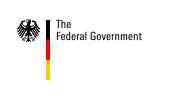Heads of state and government met for the first time at the 1975 summit in Rambouillet for multilateral discussion of economic problems. Their combined presence took on a high degree of symbolic significance.
Until this point, only the finance and economics ministers had attended to these subjects on the international stage.
Classic subjects of foreign trade
The focus of the first summit was on the international economic situation after the first oil crisis.
The main themes in respect of overcoming the sustained downturn were:
- monetary cooperation,
- macroeconomic control,
- trade,
- East-West relations,
- energy and
- North-South relations.
In the following years too the discussions centred around cooperation on monetary policy. Joint measures for reinforcing economic growth were successfully agreed.
From East-West tensions to non-proliferation and terrorism
At the beginning of the eighties other focal points came to the attention of the protagonists. The arms race debate and the Afghanistan conflict defined East-West relations and left their trace on the G7 summits. The Iran-Iraq war also became a central theme.
Cooperation was reinforced in measures against the proliferation of weapons of mass destruction and in combating international terrorism and drug trafficking.
The global partnership founded in the context of the G8 aims to prevent terrorist access to material for the construction of weapons of mass destruction and to serve disarmament. To this end concrete measures are implemented by the partners, especially in Russia.
End of the Cold War
The historic upheavals in Central and Eastern Europe, and of course also German reunification, posed new demands on the G7. Alongside bilateral aid, credits from the International Monetary Fund (IMF) were also initiated. This way, the processes of economic transformation in the countries concerned were supported.
The integration of Russia into the G7 started at the London summit in 1991.
New partnerships with Eastern Europe and the developing countries
The collapse of the former Yugoslavia and its consequences occupied the heads of state and government just as much as the non-proliferation of nuclear weapons. But the discussions were also centred on a global growth strategy and improved instruments at the World Bank and the IMF.
The debt crisis in the developing countries and the progressive worldwide pollution of the environment set a new course for the nineties. The heads of state and government picked up on current trends and increasingly discussed themes related to the environment and development policy.
On the eve of the 21st century, the G7 / G8 launched a number of projects to meet the current challenges:
- Education as a prerequisite for economic prosperity in the industrialised and developing countries,
- overcoming the digital gap,
- climate protection,
- debt relief for the poorest countries and
- the fight against Aids.
Under the German presidency in 1999 there was a decisive impetus towards accelerated debt relief for the heavily indebted poor countries (HIPC initiative).
In this millennium, the group of eight has also addressed trends in the Near and Middle East, and has contributed approaches to solutions for the new global threat posed by largely islamically motivated international terrorism.
At the St. Petersburg summit in 2006, the G8 issued a joint statement which laid the foundation for ending the then Lebanon conflict.
